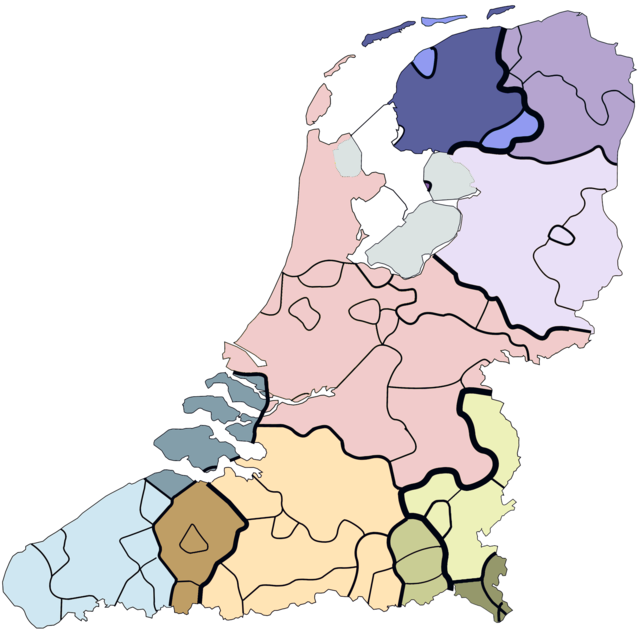Loading AI tools
From Wikipedia, the free encyclopedia
The predominant language of the Netherlands is Dutch, spoken and written by almost all people in the Netherlands. Dutch is also spoken and official in Aruba, Bonaire, Belgium, Curaçao, Saba, Sint Eustatius, Sint Maarten and Suriname. It is a West Germanic, Low Franconian language that originated in the Early Middle Ages (c. 470) and was standardised in the 16th century.
| Languages of Netherlands | |
|---|---|
| Official | Dutch[1] |
| Regional | Frisian (2.50%),[2] English (Caribbean Netherlands),[3] Papiamento (Bonaire);[3][4] Dutch Low Saxon (10.9%)[5] Limburgish (4.50%) |
| Minority | Yiddish, Romani[6] |
| Immigrant | See further: Immigration to the Netherlands |
| Foreign | English (90%-93%) (excluding the BES Islands) German (71%), French (29%), Portuguese (5%)[7] |
| Signed | Dutch Sign Language |
| Keyboard layout | |


However, both Low Saxon and Limburgish spread across the Dutch-German border and belong to a common Dutch-German dialect continuum.
The Netherlands also has its separate Dutch Sign Language, called Nederlandse Gebarentaal (NGT). It has 17,500 users, and in 2021 received the status of recognised language.[11]
Between 90%[8] and 93%[12] of the total population are able to converse in English, 71% in German, 29% in French and 5% in Spanish.

The varieties in the Netherlands can be grouped into a major Low Franconian group, the one around Almere and the rest.[13] Limburg is divided into a small area around Weert, a large area until Venlo and an area North of this.[13] There is another major group: Low Saxon divided into three areas.[13] Urk is separate.[13] Friesland hosts many of the varieties obtained.[13] They can be divided into Frisian, archaic Frisian (Hindeloopen, Schiermonnikoog and Terschelling island), Friso-Franconian varieties (Frisian cities, Midsland, Ameland island and Het Bildt) and Friso-Saxon (in Stellingwerf and variously also Westerkwartier).[13] Possible clustering includes the following possible categories not mentioned hitherto: Zeeland and Central Gelderland.[13] Midsland, Ameland island and Het Bildt can be grouped together.[13] Leeuwarden and possibly Sneek can be grouped together. Dokkum, Stavoren, Kollum and possibly Heerenveen can have single varieties.[13]
West Frisian is an official language in the Dutch province of Friesland (Fryslân in West Frisian). The government of the Frisian province is bilingual. Since 1996 West Frisian has been recognised as an official minority language in the Netherlands under the European Charter for Regional or Minority Languages, although it had been recognised by the Dutch government as the second state language (tweede rijkstaal), with official status in Friesland, since the 1950s.
The mutual intelligibility in reading between Dutch and Frisian is limited. A cloze test in 2005 revealed native Dutch speakers understood 31.9% of a West Frisian newspaper, 66.4% of an Afrikaans newspaper and 97.1% of a Dutch newspaper.[14]
Ripuarian is not recognised as a regional language of the Netherlands.
Seamless Wikipedia browsing. On steroids.
Every time you click a link to Wikipedia, Wiktionary or Wikiquote in your browser's search results, it will show the modern Wikiwand interface.
Wikiwand extension is a five stars, simple, with minimum permission required to keep your browsing private, safe and transparent.